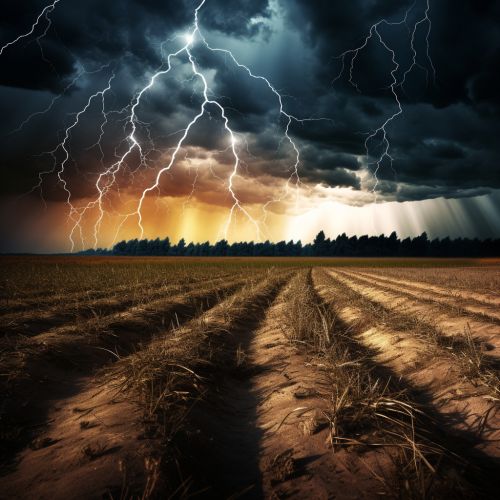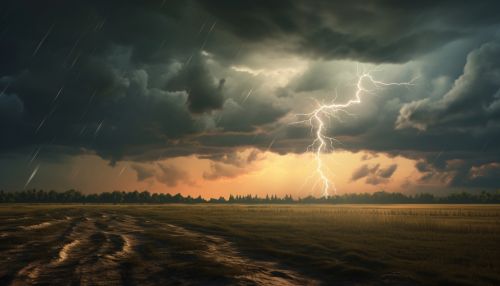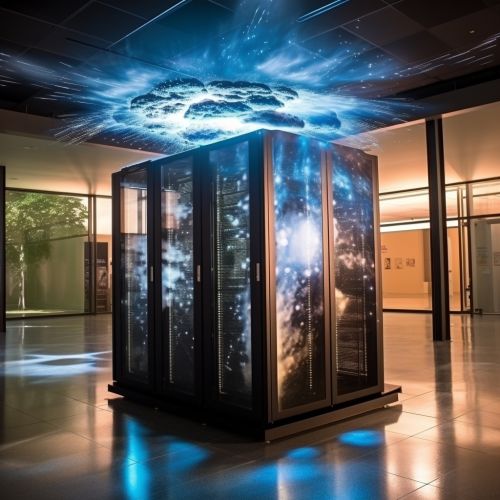Weather forecasting
Introduction
Weather forecasting is the application of science and technology to predict the conditions of the atmosphere for a given location and time. Human beings have attempted to predict the weather informally for millennia and formally since the 19th century. Meteorological phenomena are observable weather events that are explained by the science of meteorology.
History


The history of weather forecasting is a rich tapestry of scientific discovery and technological advancement. The earliest attempts at weather prediction were based on observation and the recognition of patterns. Ancient civilizations, such as the Babylonians, made methodical observations of nature, and the sky in particular, and developed a rudimentary understanding of weather patterns.
The invention of the thermometer and the barometer in the 17th century allowed for more accurate measurements of temperature and atmospheric pressure, respectively. These instruments were crucial in the development of a scientific approach to weather forecasting.
In the 19th century, the telegraph enabled rapid dissemination of weather observations, leading to the creation of weather forecasting services. The 20th century saw the advent of numerical weather prediction, which uses mathematical models to predict the weather.
Meteorological Phenomena


Meteorological phenomena are observable weather events that illuminate the complex interplay of atmospheric conditions. These phenomena range from common weather patterns such as rain and snow, to severe weather events like hurricanes, tornadoes, and thunderstorms.
Understanding these phenomena is crucial for accurate weather forecasting. For instance, the formation of clouds can indicate an approaching weather system, while the movement of a hurricane can be predicted based on atmospheric pressure patterns.
Weather Forecasting Methods
Weather forecasting involves several methods, each with its strengths and limitations. These methods include persistence, trend, analogue, numerical weather prediction, and ensemble forecasting.
Persistence
Persistence forecasting assumes that the conditions at the time of the forecast will remain the same. This method is most accurate over short periods and in regions with stable weather patterns.
Trend
Trend forecasting involves extrapolating current weather patterns into the future. This method is often used to predict temperature changes and wind direction.
Analogue
Analogue forecasting involves comparing current weather patterns with historical patterns. If a similar pattern is found, the subsequent weather from the historical event is used as the forecast.
Numerical Weather Prediction


Numerical weather prediction (NWP) involves the use of mathematical models to predict the weather. These models simulate the atmosphere and oceans, and their interactions, to forecast future weather conditions. NWP is the most sophisticated and accurate method of weather forecasting.
Ensemble Forecasting
Ensemble forecasting involves running multiple forecast models, or the same model with different initial conditions, to generate a range of possible weather outcomes. This method is used to estimate the uncertainty of a forecast.
Weather Forecasting Technologies
Modern weather forecasting relies heavily on technology. Instruments such as thermometers, barometers, and anemometers measure atmospheric conditions. Radar and satellite imagery provide real-time observations of weather systems. Supercomputers run complex numerical weather prediction models, and telecommunications networks disseminate forecasts to the public.
Accuracy and Limitations
Despite advances in technology and understanding, weather forecasting remains an inherently uncertain science. Short-term forecasts are generally accurate, but the accuracy decreases for longer-term forecasts. This is due to the chaotic nature of the atmosphere and the limitations of observational and computational capabilities.
Impact and Applications
Weather forecasts have wide-ranging impacts and applications. They are crucial for public safety, especially in the case of severe weather events. They also play a vital role in sectors such as agriculture, aviation, energy, and construction.
See Also
Meteorology Climate Prediction Severe Weather
